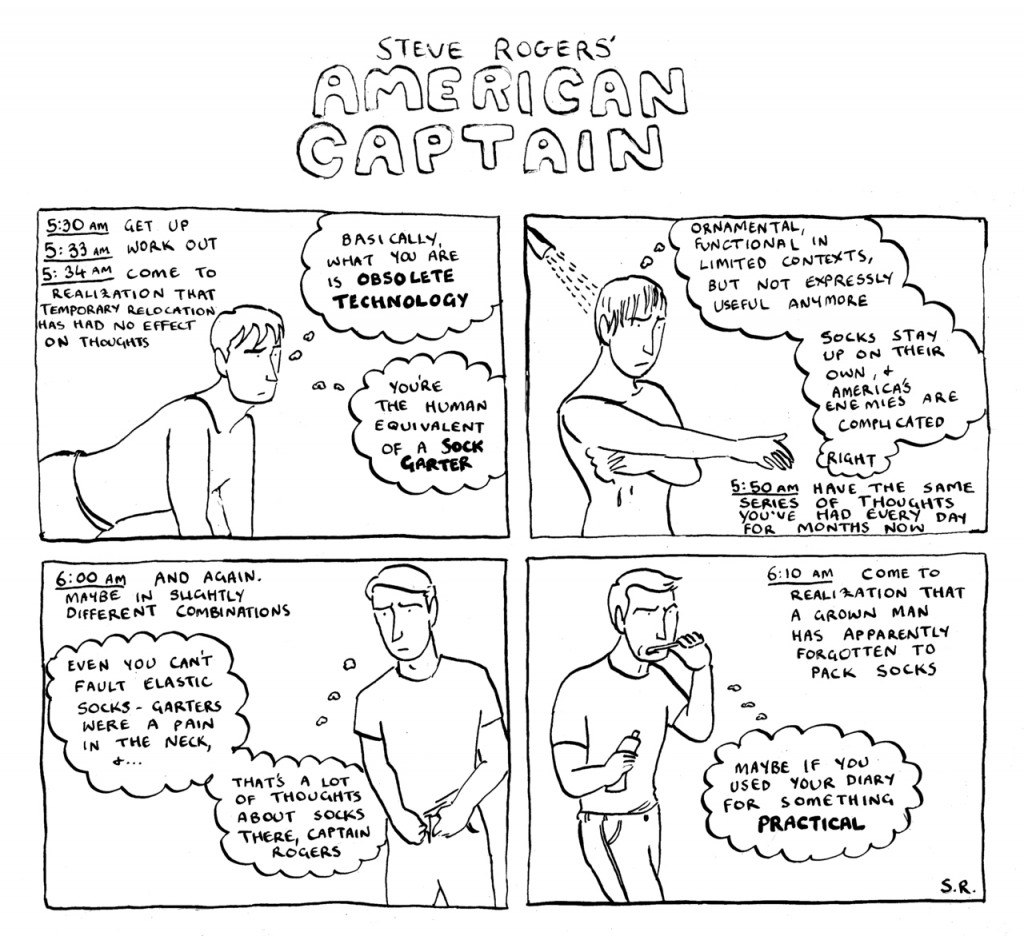This week’s theme, beautiful, beautifully made things. And we’re starting with a sports article.
Grantland’s Zach Lowe walks us through the problems with the current NBA draft system (it incentivizes teams to tank seasons to snag a draft pick) and explains an alternate proposal.
Grantland obtained a copy of the proposal, which would eliminate the draft lottery and replace it with a system in which each of the 30 teams would pick in a specific first-round draft slot once — and exactly once — every 30 years. Each team would simply cycle through the 30 draft slots, year by year, in a predetermined order designed so that teams pick in different areas of the draft each year. Teams would know with 100 percent certainty in which draft slots they would pick every year, up to 30 years out from the start of every 30-year cycle. The practice of protecting picks would disappear; there would never be a Harrison Barnes–Golden State situation again, and it wouldn’t require a law degree to track ownership of every traded pick leaguewide…
The wheel, which has all sorts of complex algorithms behind it, is designed in such a way that each half-decade mini-cycle has at least two top-12 picks clustered next to each other — a means of encouraging long-term building around young players, and of allowing bad teams to get better quickly if they draft well.
Each six-year set of picks is roughly equivalent to all other six-year cycles, so no team is ever stuck in an unfavorable cycle of bad picks.
The article has some very helpful diagrams and history, and I recommend clicking through.
And speaking of intricate algorithms, a friend of mine recently lent me her copy of The Shakespearean Ciphers Examined. Two crytography buffs (using time freed up after beating the Nazis) took aim at theories that Shakespeare’s plays contain secret messages about their authorship. The math explanations are clear, and the commentary is snarky, as you can see below:
To an ordinary person the resultant message would be enough to prove there is no cipher being used. The difference between the ordinary person and the Baconian is, shall we say, one of degrees of persistence and ingenuity…
Other variations of differing degrees of ingenuity by other writers have appeared from time to time. Some anagrams are in English; for example. one version (Baconiana, April 1902) runs: ‘But thus I told Franciiiiii Bacon’. The last word but one, it is explained, is Fran followed by iiiiii, or 6 in Roman numerals: adopting the French pronunciation, Fran-6 yields Francis, and voilà!
Similarly intricate, but a little more self-aware is the annual Rube Goldberg Machine Contest. Contestants are trying to hit a nail with a hammer, but my favorite machine was the very first one shown in the video below (made by one of the judges).
Darius Kazemi’s Twitter bots also accomplish a goal using by aggregating flotsam and jetsam, but he relies on coding, not kinetics:
Kazemi’s Twitter bots—as well as the interactive websites, games, and simple computer programs that make up their extended family—run constantly, entertaining and provoking their fans by riffing on the algorithms that increasingly run our world. One project, Professor Jocular, finds comments people have made on Twitter and tries, clumsily, to explain what’s funny about them, even when nothing is. Another generates a steady stream of awkward pickup lines. Another pulls from a public database of “last words” uttered by condemned prisoners in Texas, and, to heartbreaking effect, displays one by one every sentence in which an inmate on the precipice of death used the word “love.” Kazemi’s crowning achievement so far might be the program he rigged up to order $50 worth of completely random books, CDs, and DVDs from Amazon and deliver them to his house every month. Over Christmas, he sold a limited run of “prints” of this project, allowing his fans to receive their own randomly selected gifts.
Kazemi’s dozens of projects have won him admirers among a range of people so wide it suggests the world doesn’t quite have a category for him yet. His work is tracked by video game designers, comedians, philosophers, and fellow bot-makers; an English literature professor named Leonardo Flores has written about the output of his bots in an online journal devoted to electronic poetry. Web designer Andrew Simone, who follows Kazemi’s work, calls him “a deeply subversive, bot-making John Cage.”
My favorite twitter bot remains @StealthMountain, though. It searches twitter for any instances of “sneak peak” and replies “I think you mean ‘sneak peek.'”
Ok, fair warning, in this next link, the act of trying to make something beautiful doesn’t go all that well. Ursula Vernon has a story titled “Jackalope Wives” in Apex Magazine, and I really enjoyed it. I’ve posted the first few grafs below, and, if you want a bit more to go on, think selkies.
The moon came up and the sun went down. The moonbeams went shattering down to the ground and the jackalope wives took off their skins and danced.
They danced like young deer pawing the ground, they danced like devils let out of hell for the evening. They swung their hips and pranced and drank their fill of cactus–fruit wine.
They were shy creatures, the jackalope wives, though there was nothing shy about the way they danced. You could go your whole life and see no more of them than the flash of a tail vanishing around the backside of a boulder. If you were lucky, you might catch a whole line of them outlined against the sky, on the top of a bluff, the shadow of horns rising off their brows.
And on the half–moon, when new and full were balanced across the saguaro’s thorns, they’d come down to the desert and dance.
The young men used to get together and whisper, saying they were gonna catch them a jackalope wife. They’d lay belly down at the edge of the bluff and look down on the fire and the dancing shapes — and they’d go away aching, for all the good it did them.
For the jackalope wives were shy of humans. Their lovers were jackrabbits and antelope bucks, not human men. You couldn’t even get too close or they’d take fright and run away. One minute you’d see them kicking their heels up and hear them laugh, then the music would freeze and they’d all look at you with their eyes wide and their ears upswept.
The next second, they’d snatch up their skins and there’d be nothing left but a dozen skinny she–rabbits running off in all directions, and a campfire left that wouldn’t burn out ’til morning.
That was text heavy, so let’s go with an image, next. Johnson Tang has a beautiful set of photos showing you how he sculpted this:
Yes, the “splash” is also sculpted.
And… I guess on the theme of lovely things struggling? There’s a webcomic called “Steve Rogers’ American Captain” that follows the day-to-day life of Captain America, from the Avengers continuity. He’s just as endearing as the guy in the movies, but the comic spends a bit more time exploring PTSD and his trouble adjusting to the present day. (And, in the process, does a lot of good work destigmatizing anxiety and depression).
For more Quick Takes, visit Conversion Diary!















